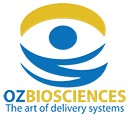BLOG > Publications & Citations > Challenges in AAV-Based Retinal Gene Therapies

Authors: Siontas, Olivier and Ahn, Seungkuk.
Source: Journal of Clinical Medicine 2024, 13(23), 7385
We are thrilled to share insights from a new study titled "Challenges in AAV-Based Retinal Gene Therapies and the Role of Magnetic Nanoparticle Platforms" published in Journal of Clinical Medicine by Siontas, Olivier and Ahn, Seungkuk.
"Retinal diseases, leading to various visual impairments and blindness, are on the rise. However, the advancement of retinal gene therapies offers new hope for treatment of such diseases. Among different vector systems for conferring therapeutic genetic load to retinal cells, adeno-associated viruses (AAVs) have been most intensively explored and have already successfully gained multiple clinical approvals. AAV-based retinal gene therapies have shown great promise in treating retinal disorders, but usually rely on the heavily disruptive administration methods such as subretinal injection. This is because the clinically well-established, minimally invasive alternative of intravitreal injection (IVI) necessitates AAVs to traverse the retinal inner limiting membrane (ILM), which is hard to penetrate in higher eye models, like human or porcine eyes. Additionally, AAVs’ natural transduction preference, known as tropism, is commonly not specific to cells of only one target retinal layer, which is another ongoing challenge in retinal gene therapy. This review examines strategies to overcome these obstacles with a focus on the potential of magnetic nanoparticles (MNPs) for improved retinal AAV delivery."
Congratulations to the authors for this great article.
Our AdenoMag, ViroMag RL and FluoMag-V transduction reagents were used to transduce AAV in Mouse Brain (in vivo) and retina (ex-vivo), and in Pig Retina and eye (ex-vivo).
Read the article See our AdenoMag See our ViroMag R/L See our FluoMag







